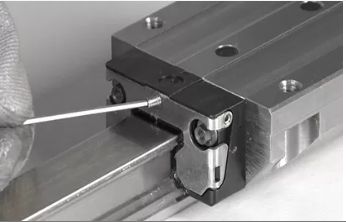Linear guides, such as linear motion systems, ball screws, and cross roller guides, are crucial components in various industries, ensuring precise and smooth motion. To maintain their longevity and performance, proper lubrication is essential. In this article, we will explore the importance of lubrication for linear guides and provide guidance on selecting the right lubrication for your specific application.
The Role of Lubrication:
Lubrication serves as a protective barrier between moving parts, reducing friction and wear. For linear guides, it's particularly critical as they often operate under high loads and in challenging conditions. Proper lubrication not only extends the lifespan of these components but also enhances their efficiency and accuracy.
Choosing the right lubrication involves considering several factors:
Load and Speed: Higher loads and speeds may require lubricants with better anti-wear properties and higher viscosity.
Temperature: Extreme temperatures, whether hot or cold, demand lubricants that can perform reliably under those conditions.
Environment: Harsh environments, such as those with dust, moisture, or chemicals, necessitate specialized lubricants.
Maintenance Intervals: Some lubricants require more frequent reapplication than others, affecting maintenance schedules.
There are various lubrication options to choose from, including:
Grease: Grease is a popular choice for linear guides due to its simplicity of application and ability to stay in place. It is effective in protecting against contamination and offers good load-carrying capacity.
Oil: Oil lubrication provides excellent heat dissipation and is suitable for high-speed linear guides. However, it may require more frequent replenishment.
Solid Lubricants: Solid lubricants, such as graphite or PTFE, are self-lubricating and can be ideal for applications with limited access for maintenance.
Selecting the Right Lubricant:
To choose the most suitable lubricant, it's essential to consider your specific application's requirements:
Load and Speed: Calculate the expected loads and speeds your linear guides will experience.
Temperature: Determine the temperature range in which your system operates.
Environment: Assess the presence of contaminants or chemicals in the operating environment.
Maintenance: Consider your maintenance schedule and the accessibility of the components.
Regular Maintenance:
Proper lubrication is not a one-time task but an ongoing maintenance requirement. Regularly monitor the condition of your linear guides and reapply or replenish lubrication as needed to ensure consistent performance and longevity.
Consulting with Experts:
If you are unsure about which lubrication to choose, consider consulting with lubrication experts or the manufacturer of your linear guides. They can provide guidance based on your specific application's needs.
Conclusion:
Choosing the right lubrication is crucial for ensuring the longevity and optimal performance of your linear guides. By carefully evaluating factors such as load, speed, temperature, environment, and maintenance requirements, you can select the lubrication that best suits your application. Properly lubricated linear guides will not only enhance efficiency but also reduce maintenance costs and downtime, contributing to the overall success of your operations.
For more detailed product information, please email us at amanda@KGG-robot.com or call us: +86 152 2157 8410.
Post time: Dec-02-2023







